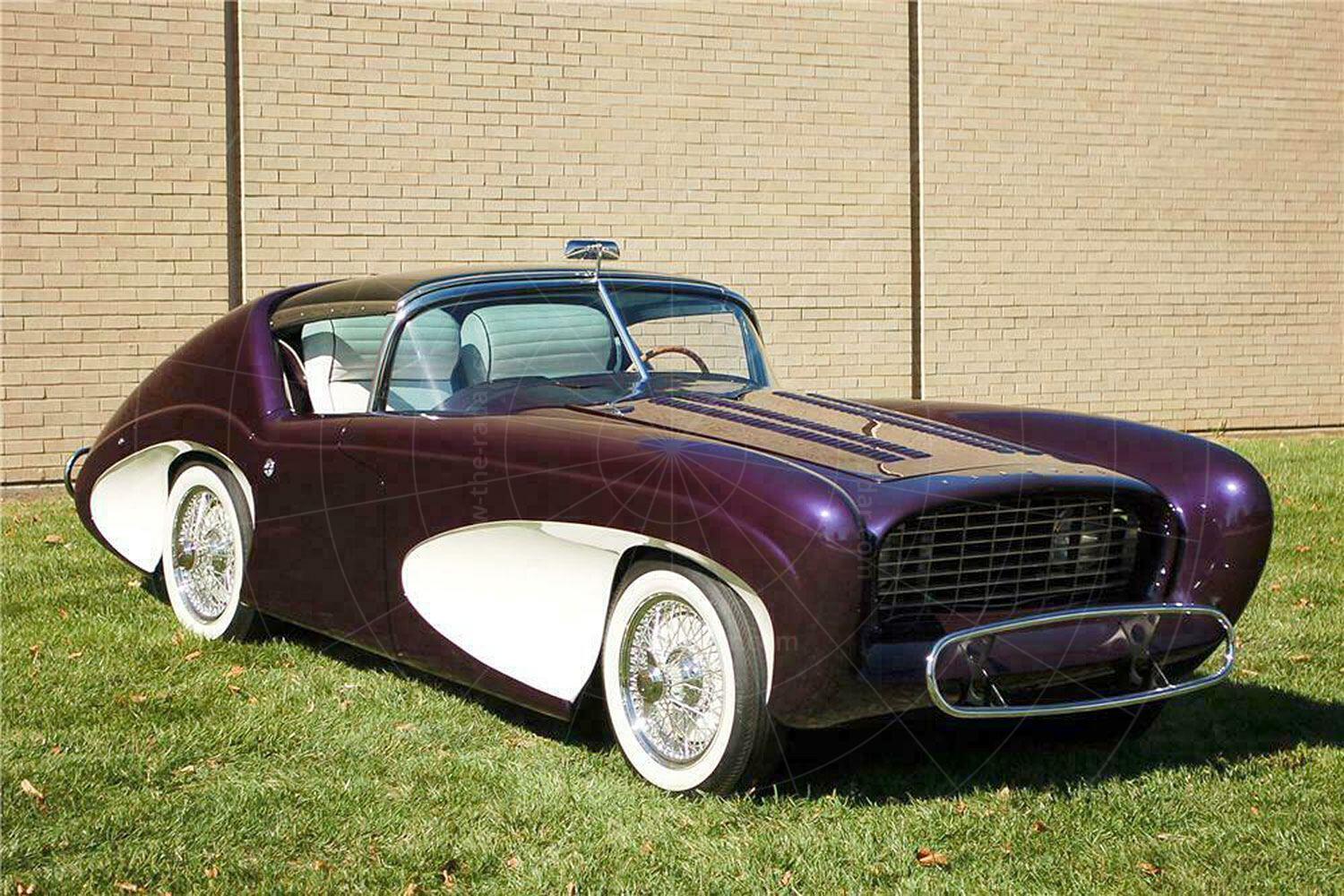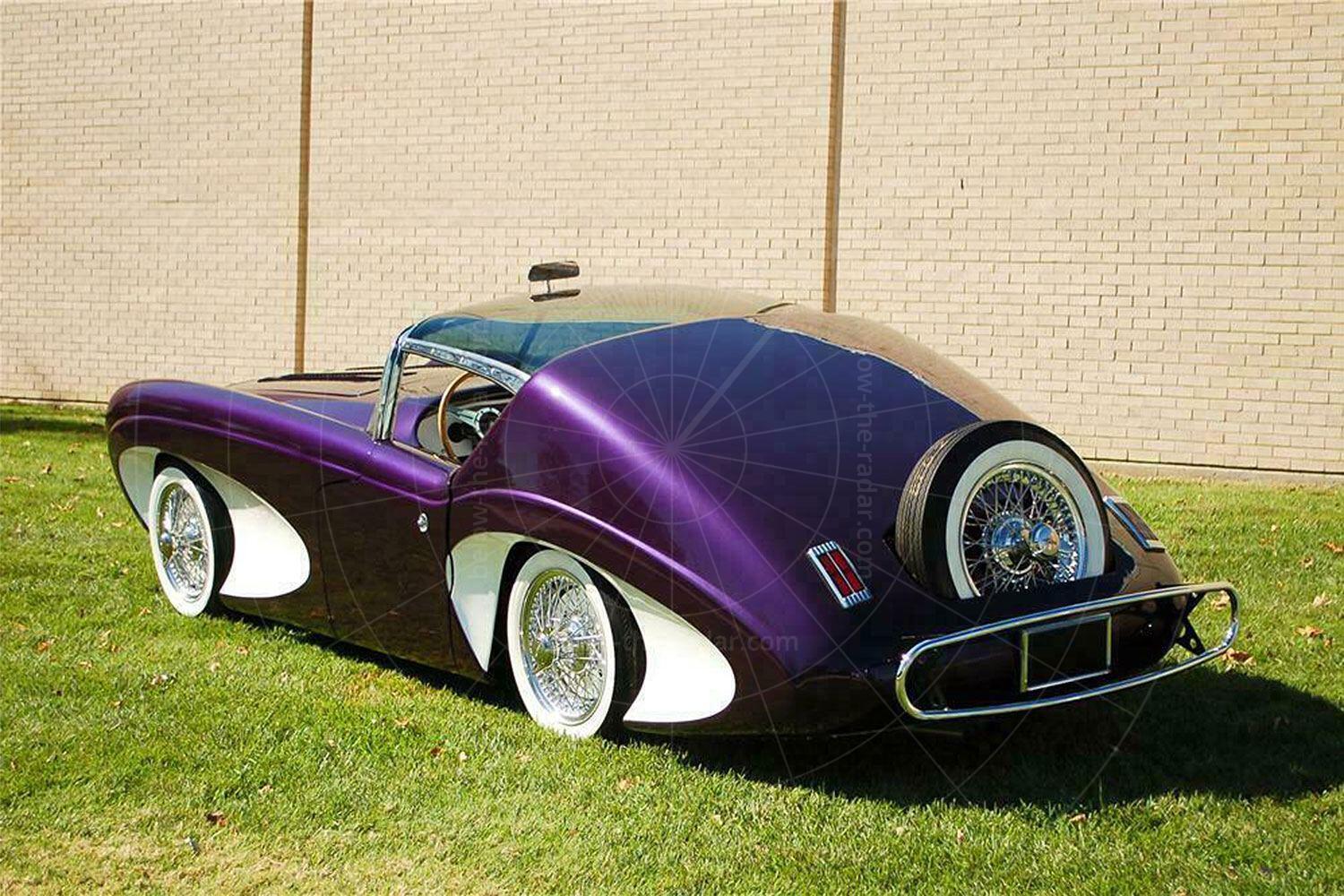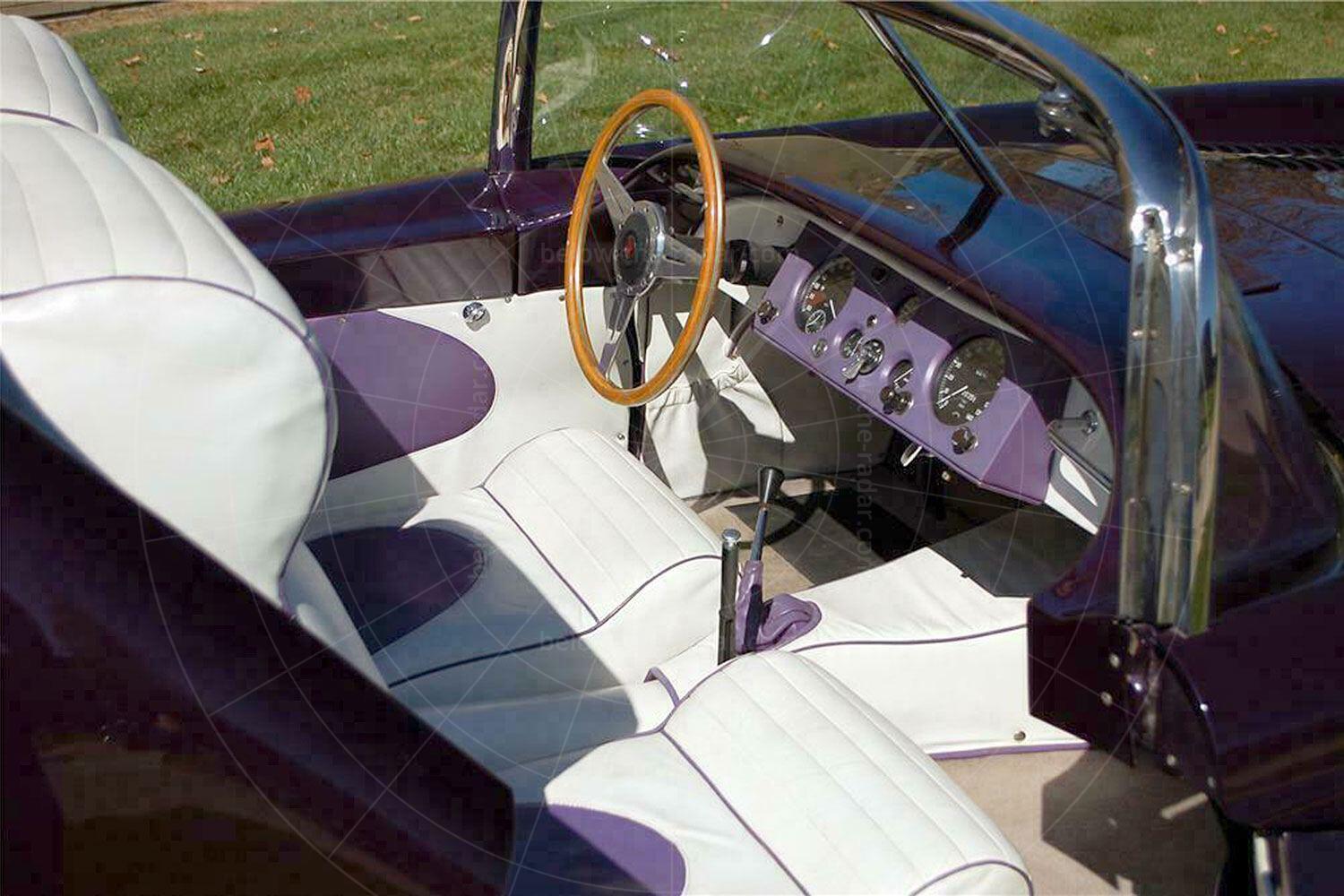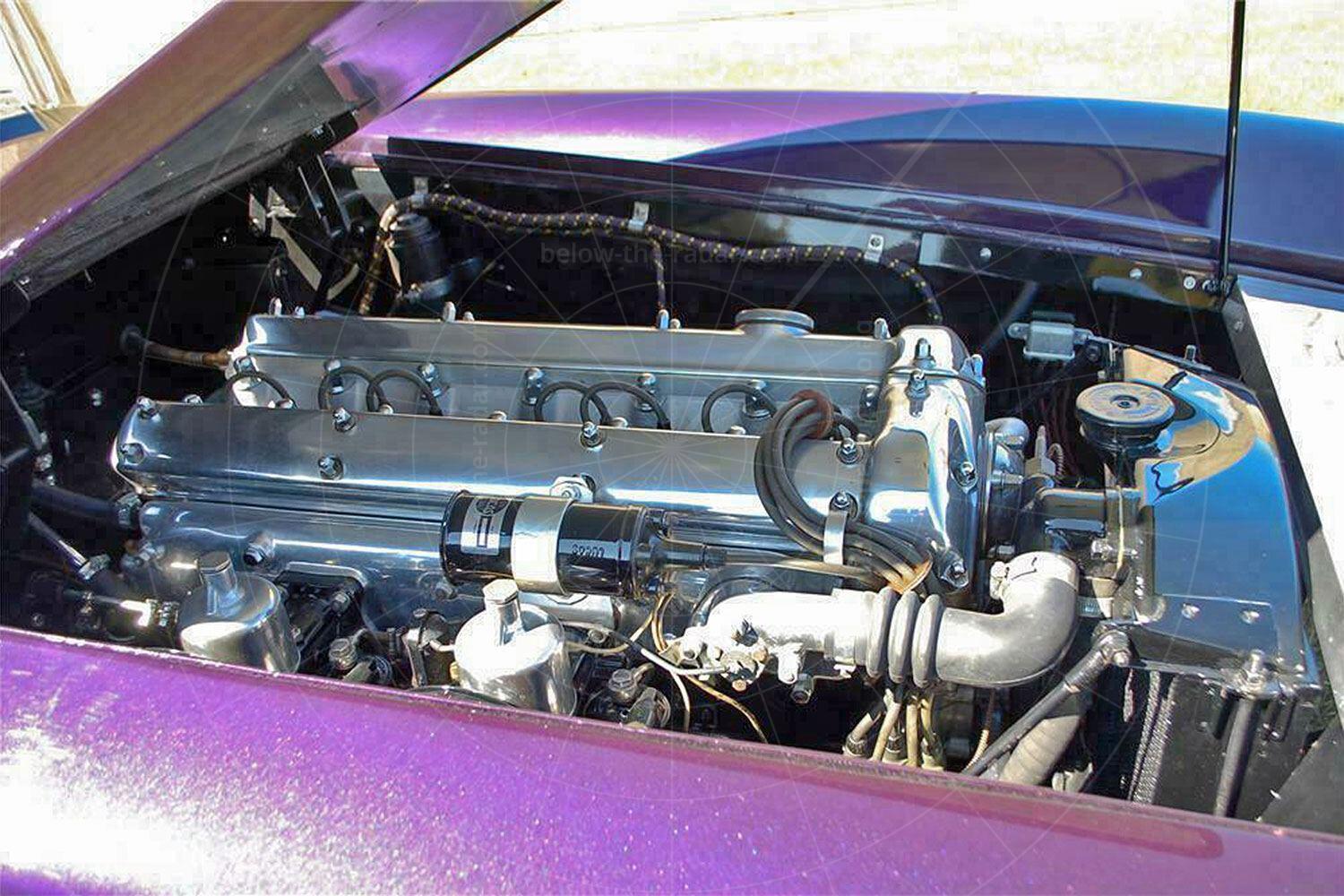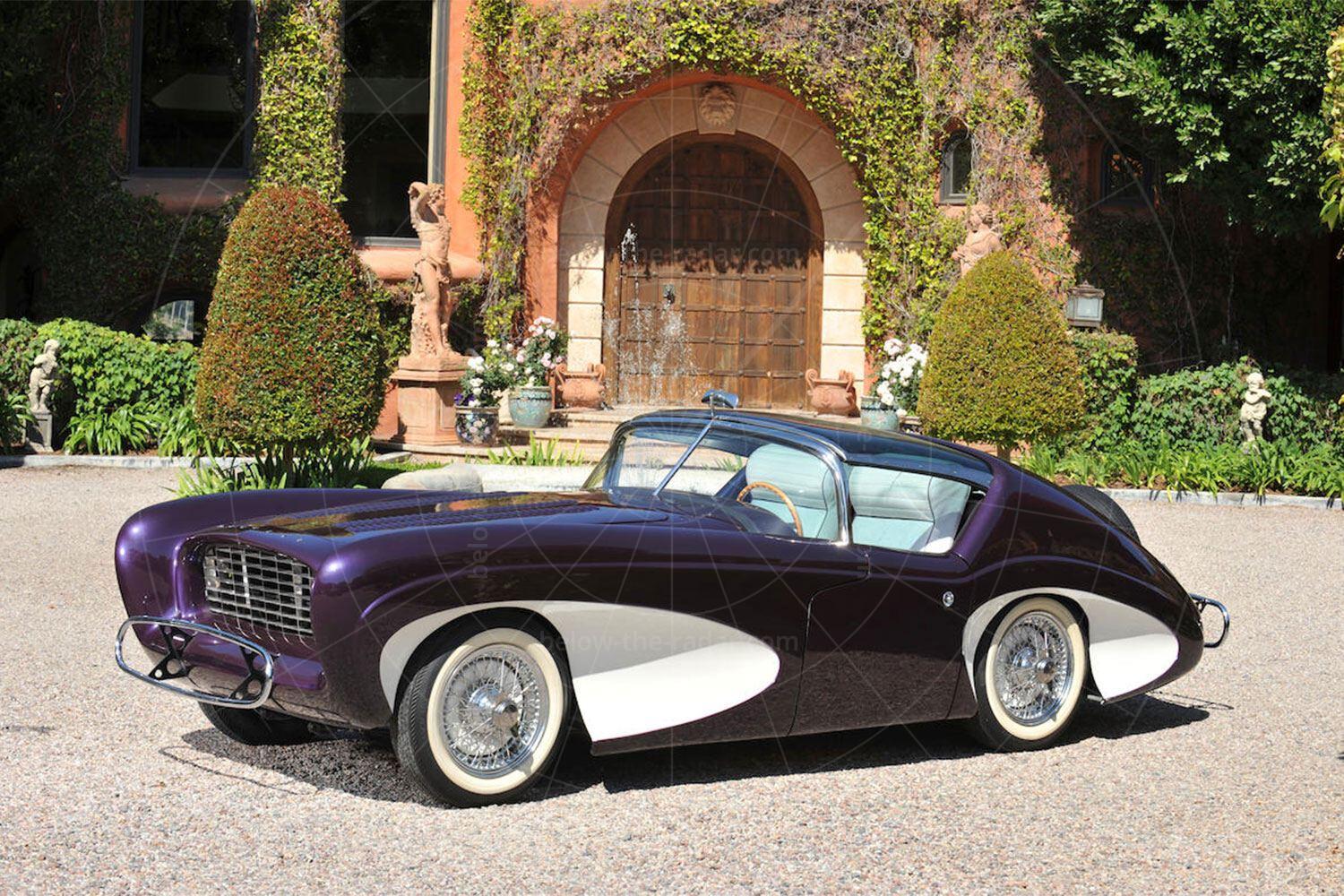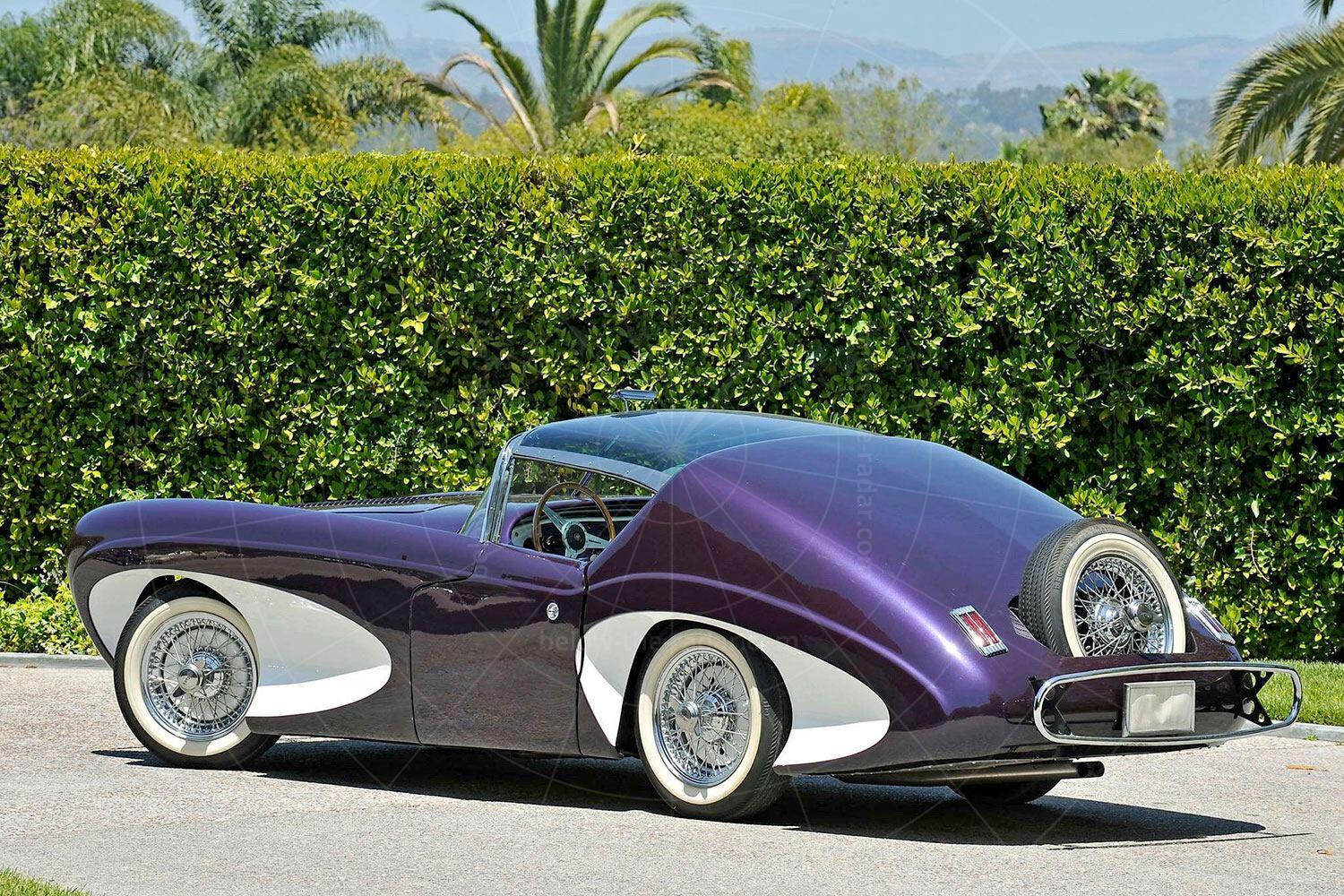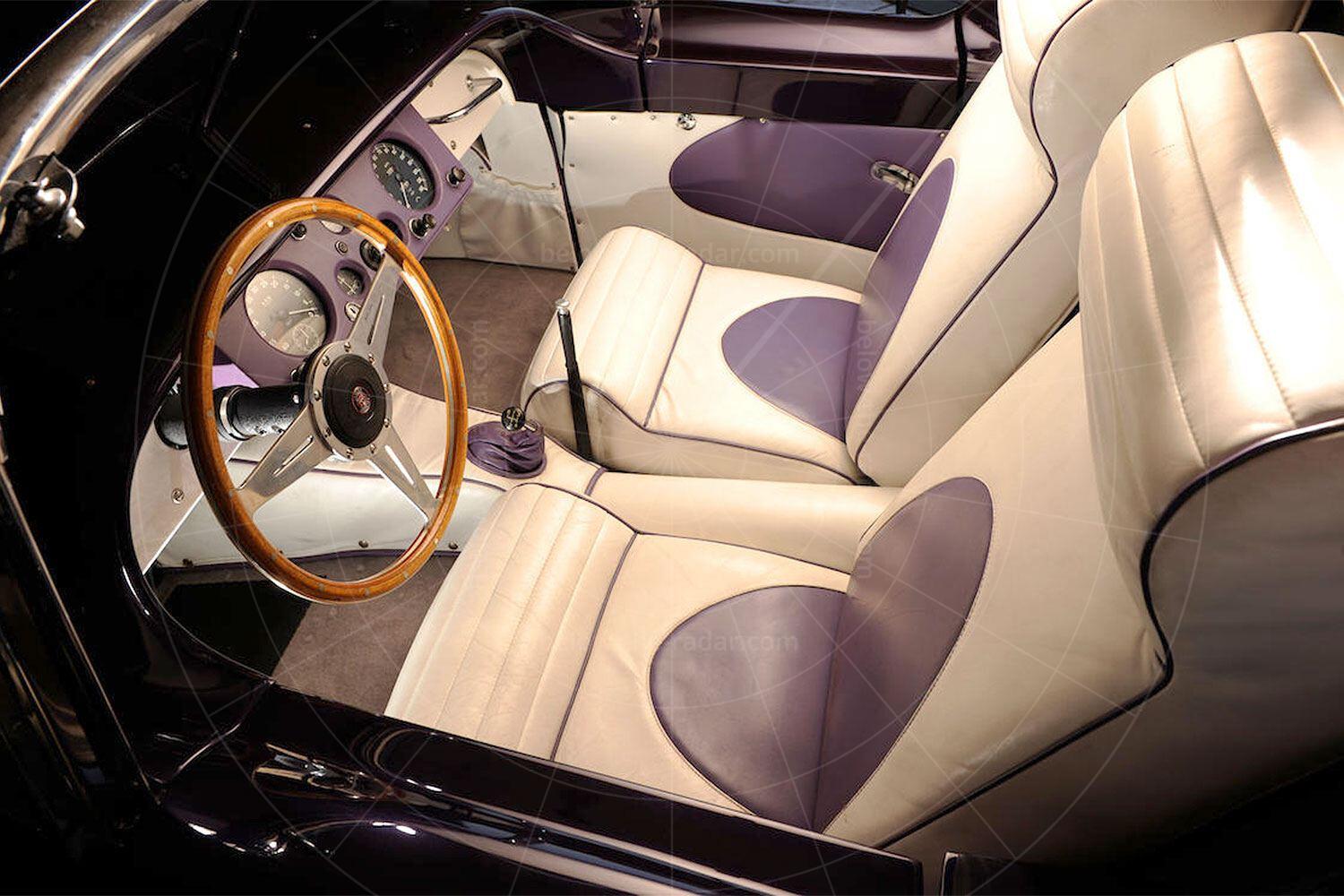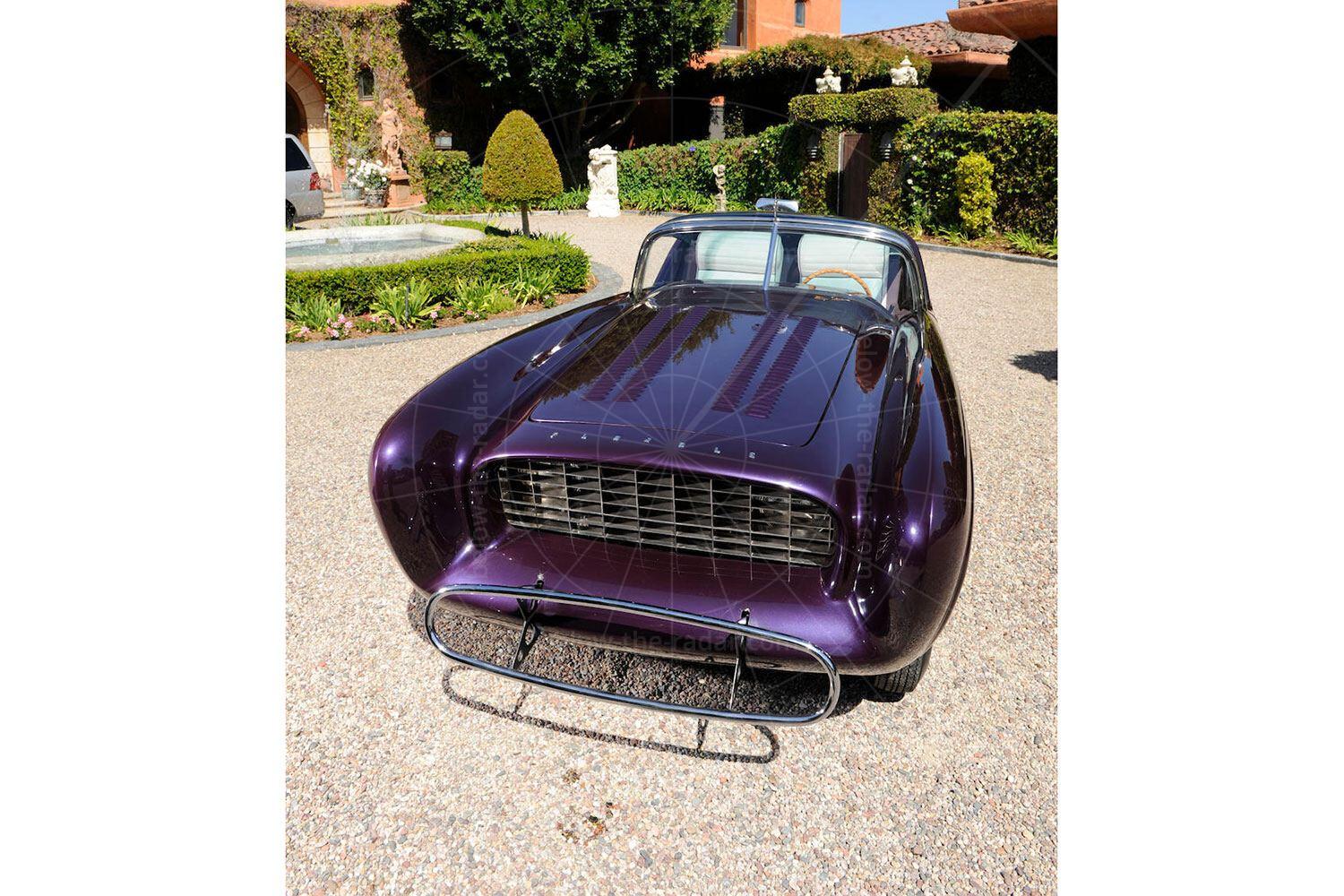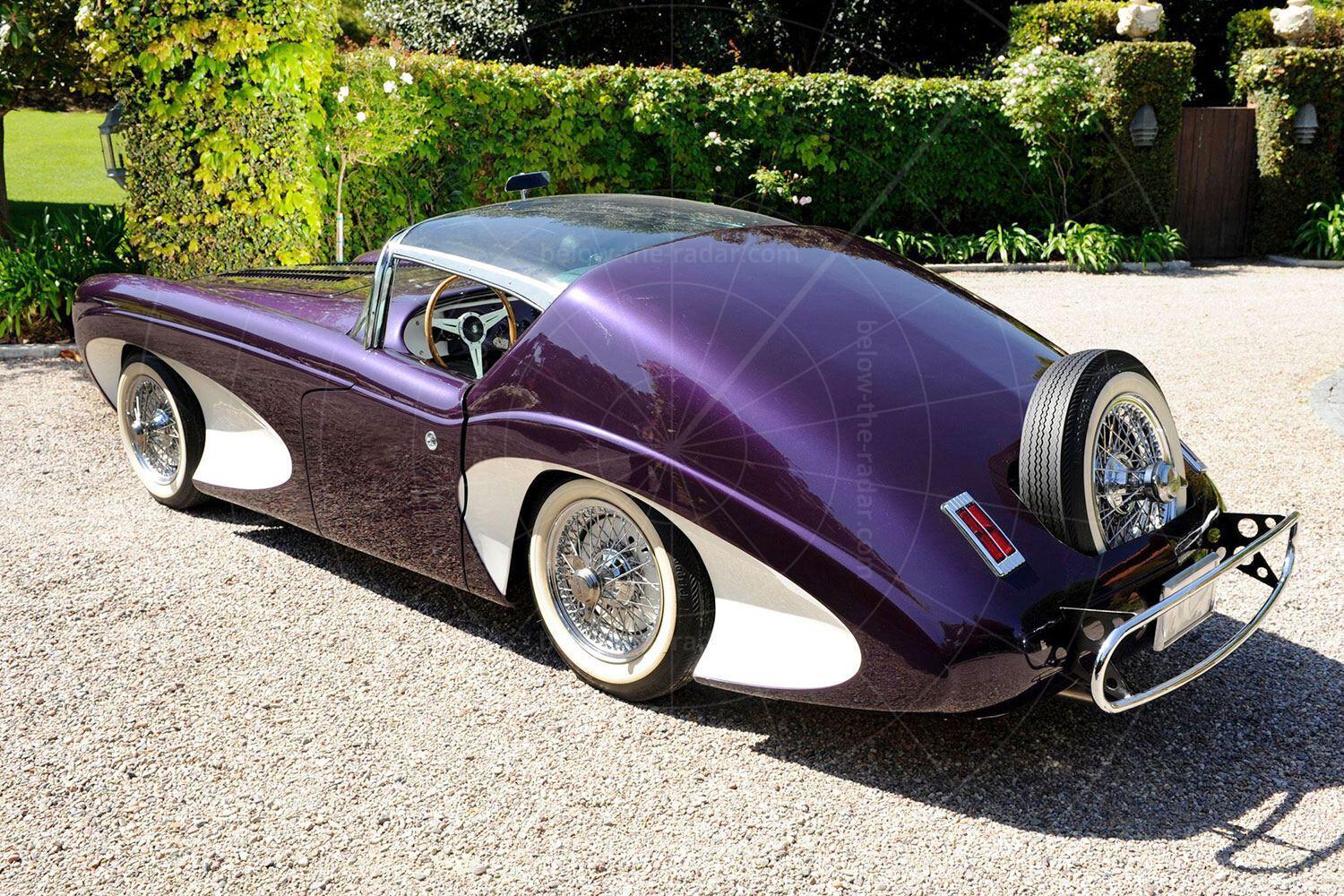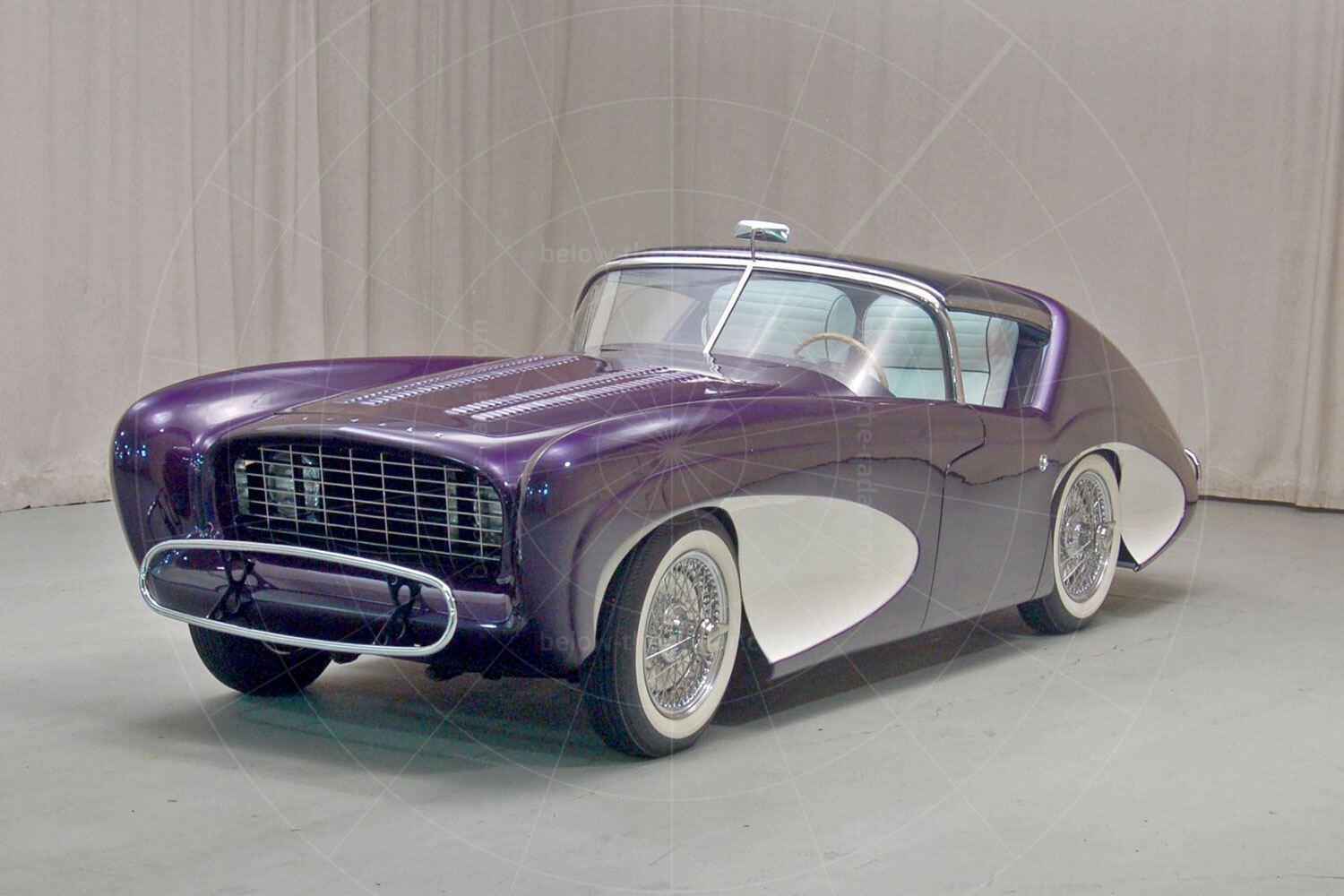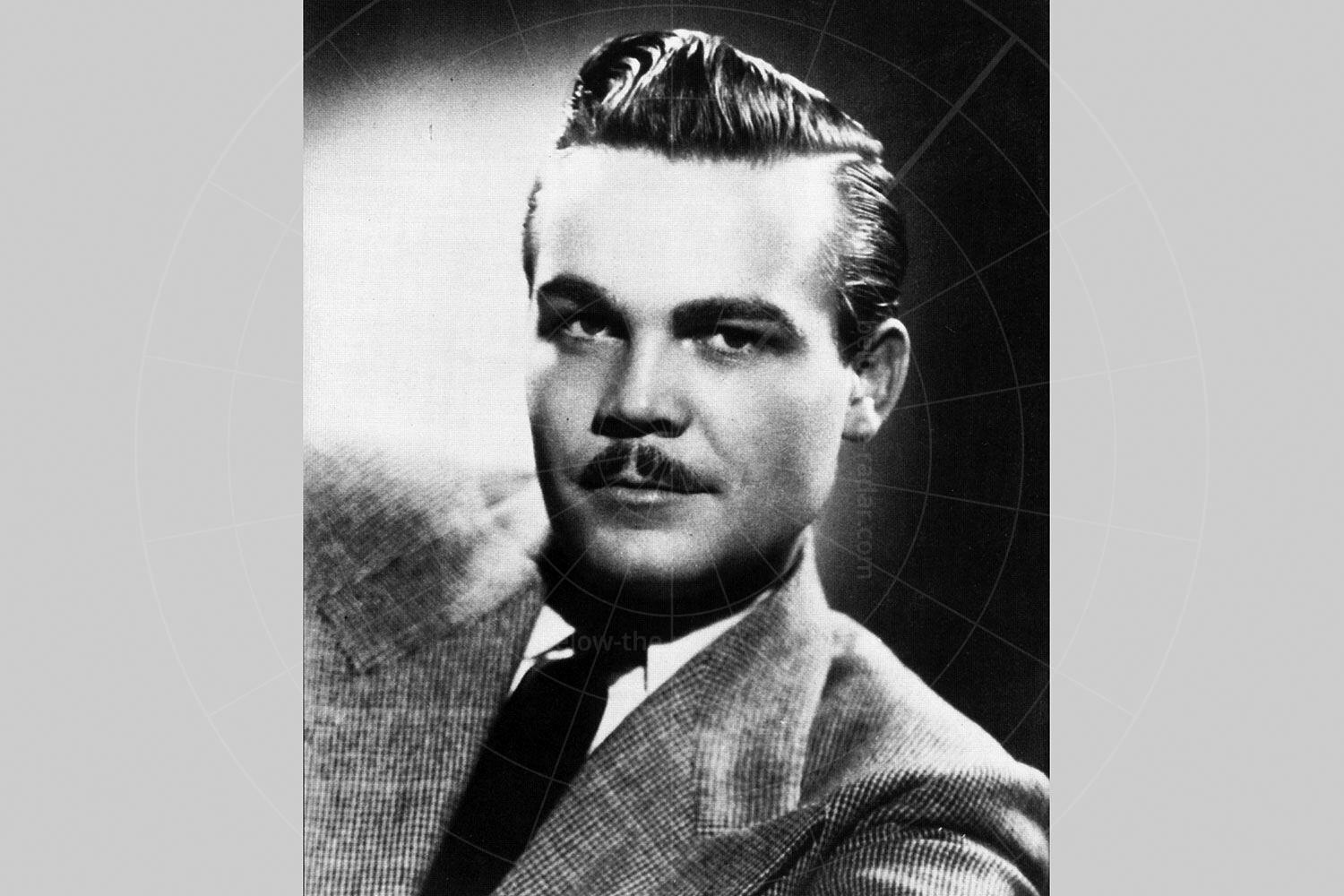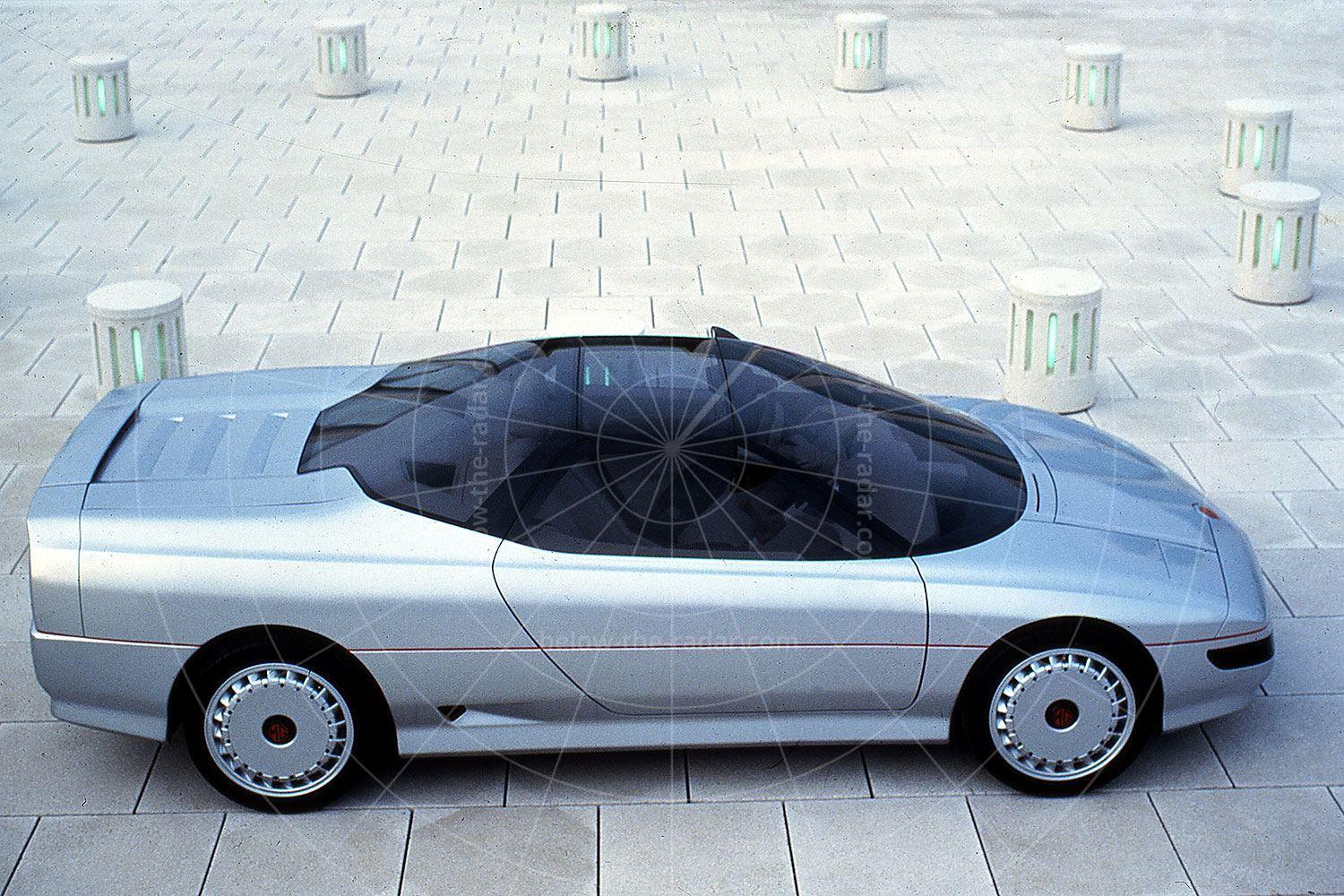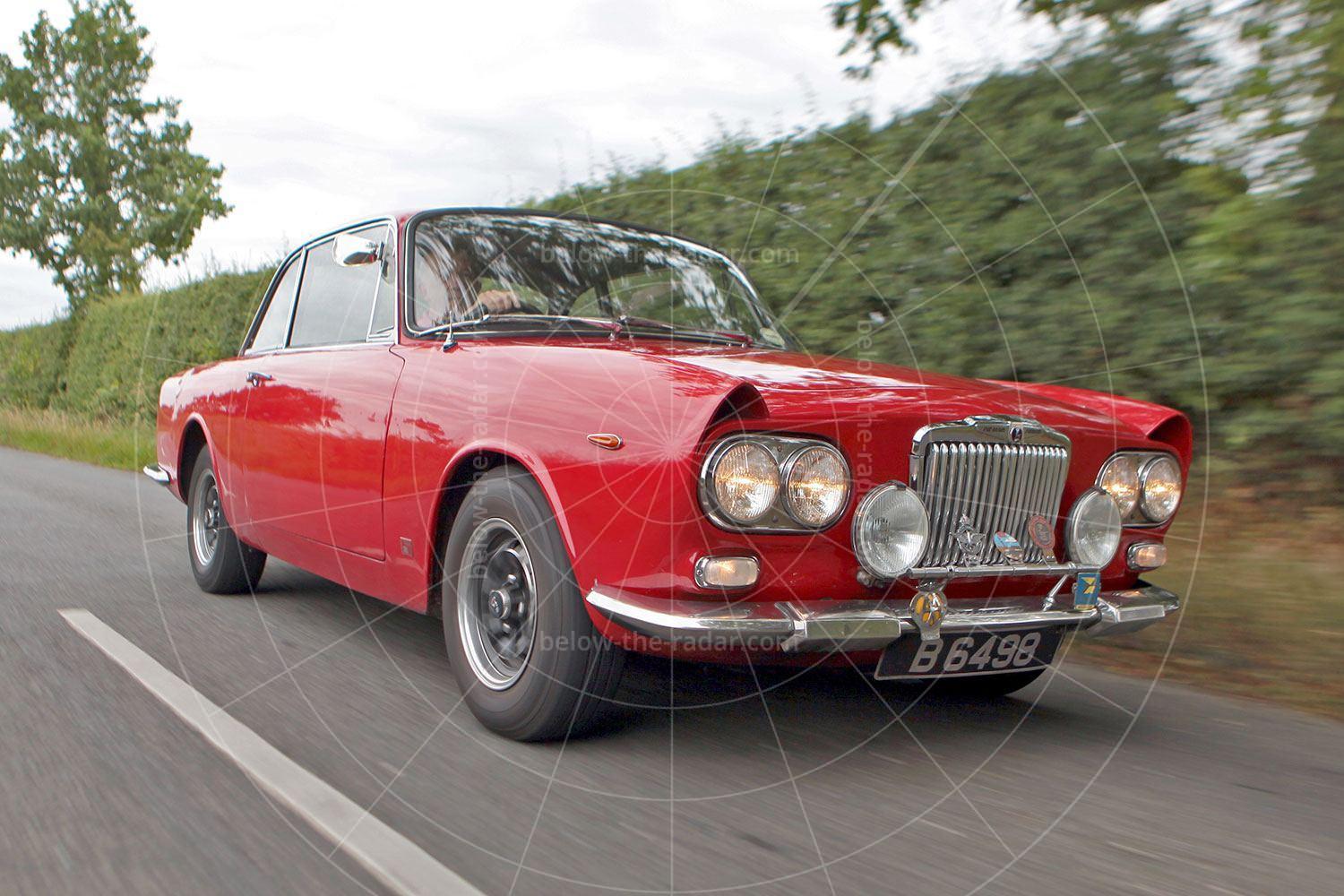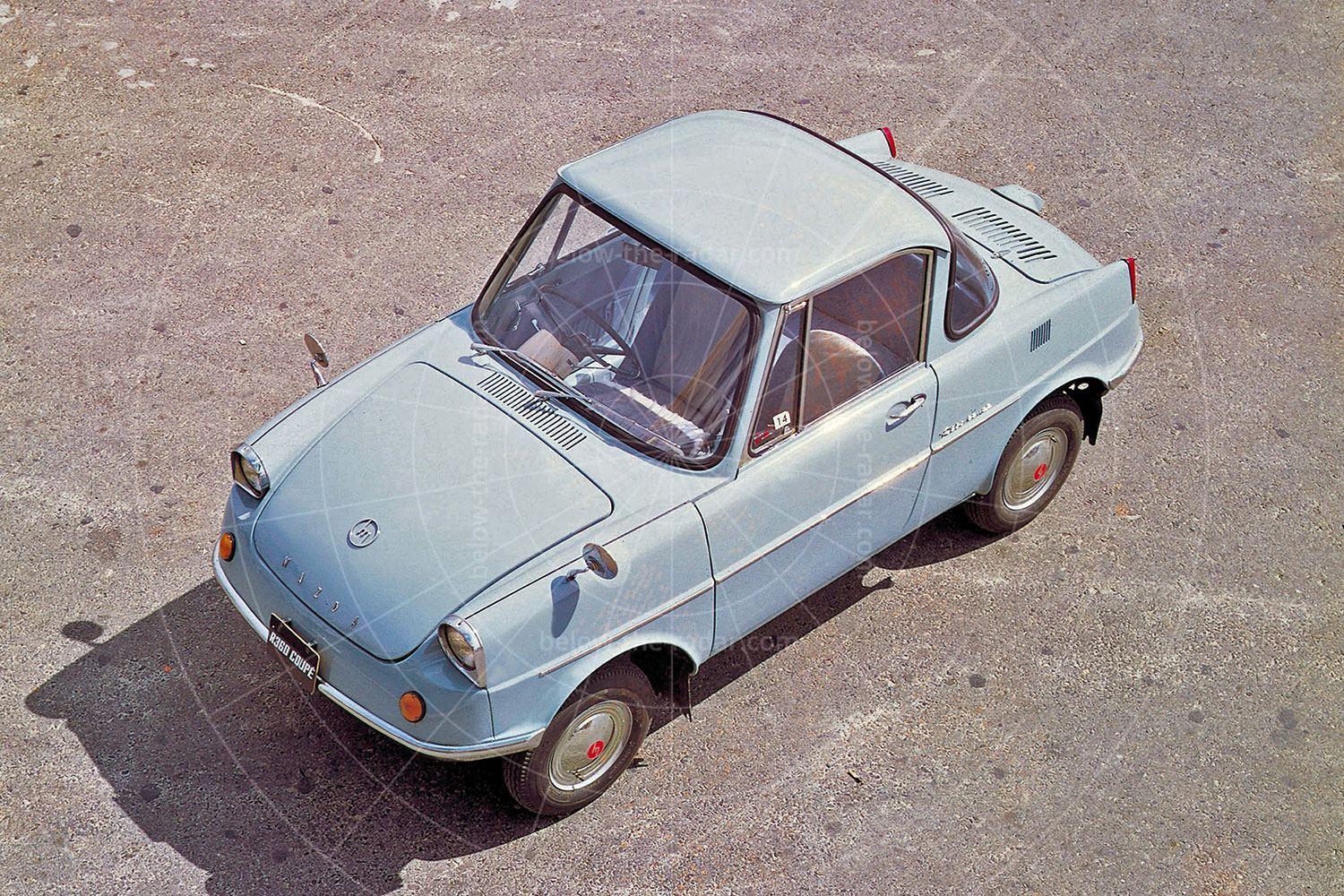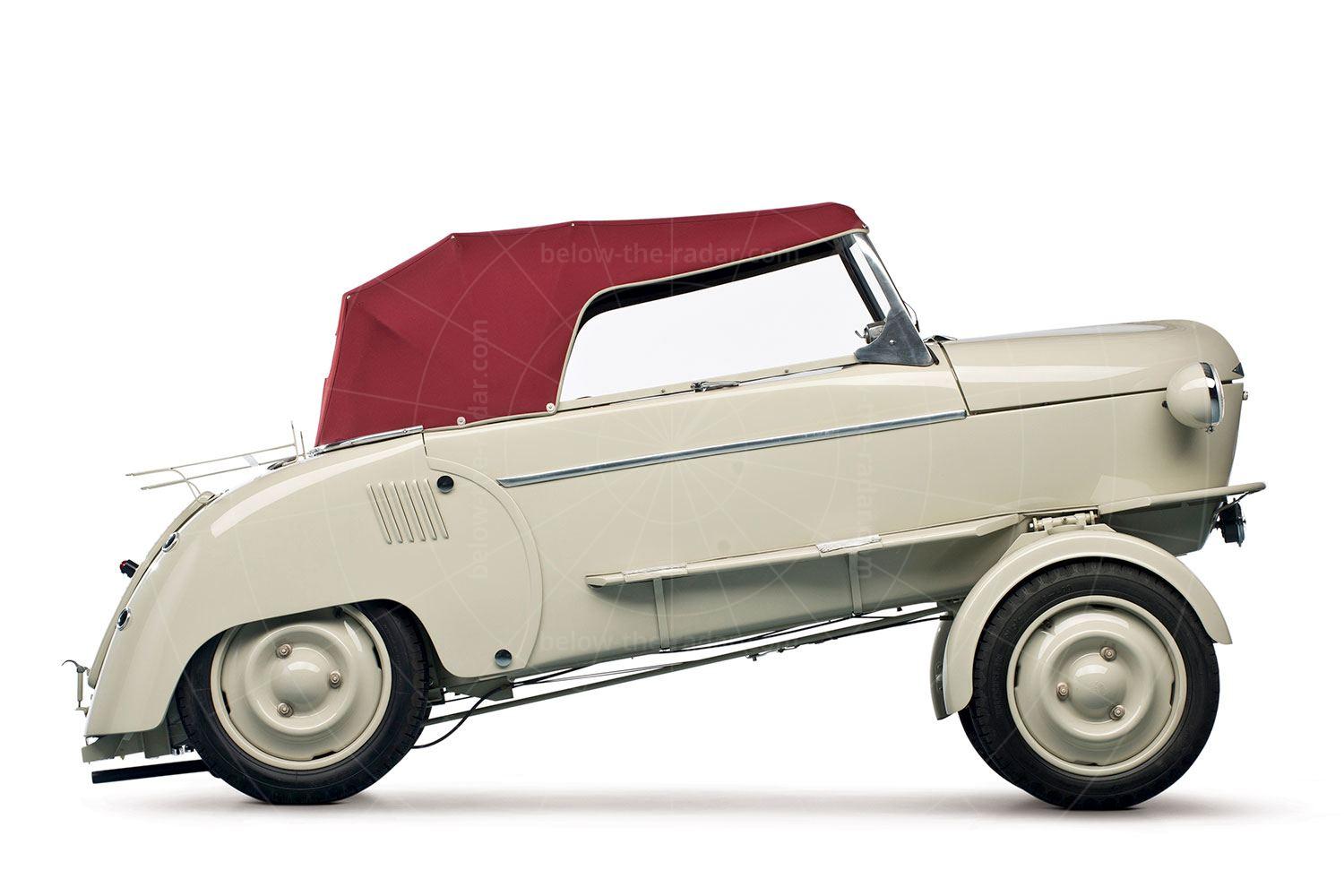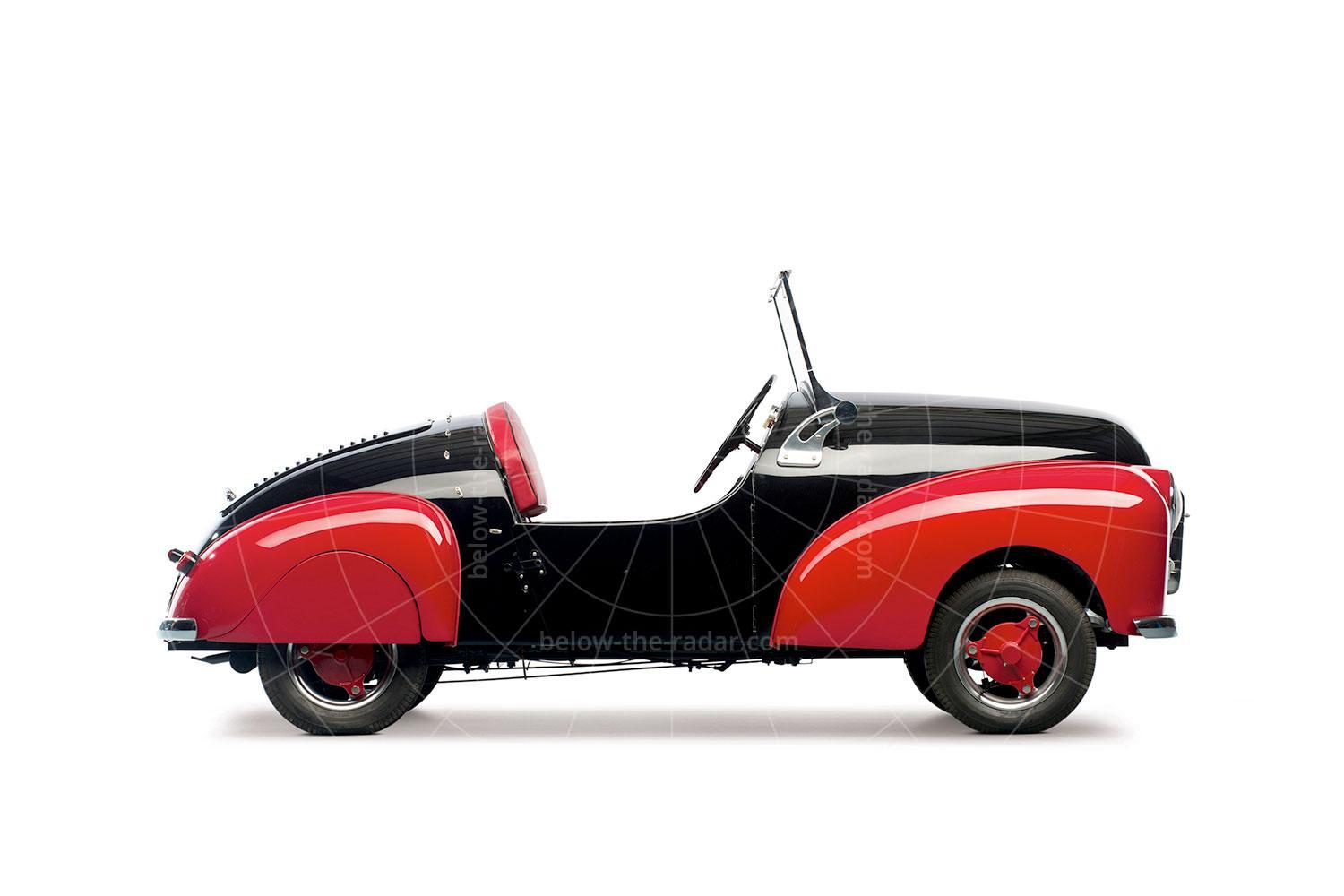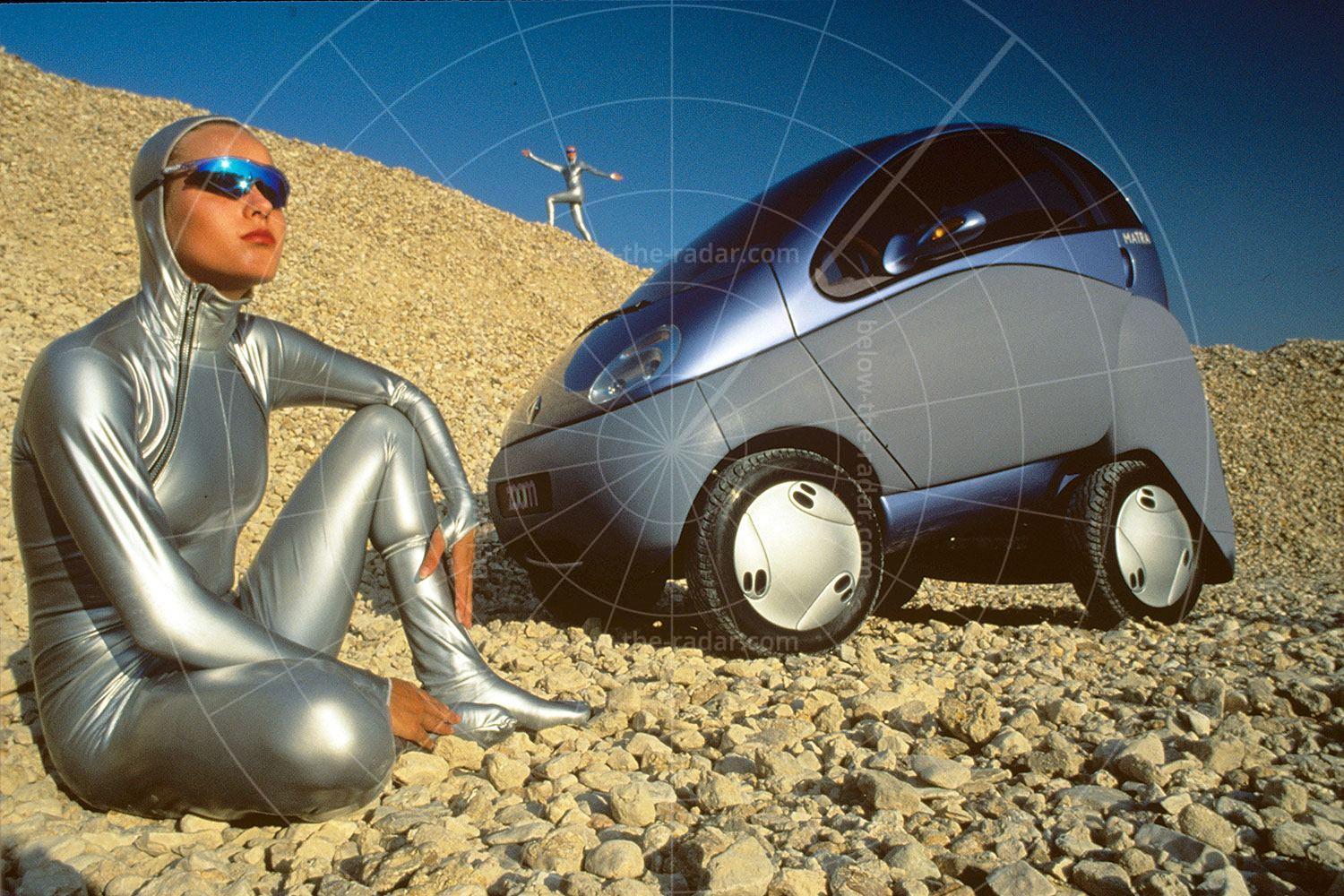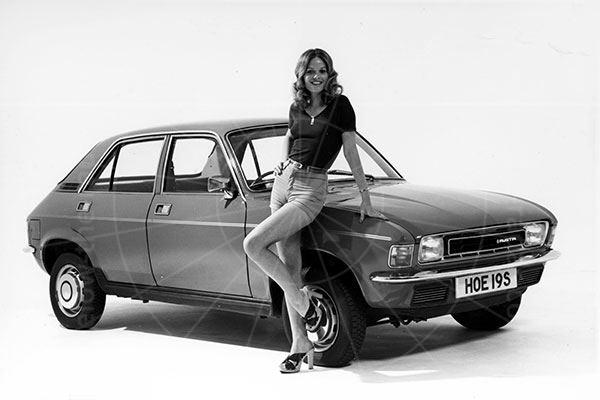Bill Flajole (a French name which he pronounced "Flay-joel") began his automotive design career in 1933, straight out of high school when he joined Chrysler. He would later moved to General Motors, the Murray Corporation and then Ford, where he worked with Bob Gregorie on the design of Edsel Ford's original Continental. Flajole also designed a small sportster, the Nash NXI, which eventually became the Metropolitan.
Like many other designers of the early 1950s, Flajole was fascinated by the Jaguar XK120 and he began sketching his own ideas as applied to the XK's 102-inch wheelbase, straight-six XK engine and low-slung chassis. The Forerunner is the result of those jottings.
Flajole bought his own 1951 XK120M (the hot US-spec version of the XK120) when it was two years old. It was this car which would provide the basis for his glassfibre-bodied special, his plan being to rebody the Jaguar in 1954 to take it racing. In the event the bodyshell wasn't ready and it wouldn't be until 1955 that the Flajole Forerunner hit the road, although by the time it was built it was used relatively sparingly because it was so hard to insure, being a home-built one-off.
Created in glassfibre in Flajole's own studio, the Forerunner was mechanically identical to the XK120M on which it was based. That meant power came from a 3442cc twin-cam straight-six fed by twin SU 1.75-inch carburettors. Power was fed to the rear wheels via a four-speed manual gearbox, there were drum brakes all round and up front there was independent suspension by torsion bars and telescopic dampers. At the rear there was a live axle, semi-elliptic leaf springs and lever arm dampers.
Where Flajole spent his time was on starting from scratch with the bodywork, coming up with a far more dramatic shape than Jaguar had produced. The Forerunner featured tall wings, a dropped bonnet and a wide grille integrated with the bumpers.
The piece de resistance however, was an innovative retractable roof made of tinted Plexiglass a quarter of an inch thick, which slid down to hide under a dramatically sloping fastback rear deck. The original plan had been to make this electrically operated, but with Motor Trend applying pressure on Flajole to finish his car so that they could put it on the front cover, the roof remained operated by hand.
There would be more than one iteration of the Flajole Forerunner and the final one included dramatic recessed cove panels behind the wheels, design features which foreshadowed the Corvette's adoption of them in 1956.
The oval grille that featured inset headlights bore more than a passing resemblance to the Nash Healey as well as the 'bathtub' Nash Airflyte models, which is no surprise as by this time Flajole was working as a design consultant for Nash-Kelvinator. Less obvious are the delicate chromed tubular steel bumpers that adorn the Forerunner front and rear. Flajole hated the unnecessarily heavy bumpers that had become the norm on mainstream American cars of the time, and he wanted to do something that was as far removed from those as possible.
Inside, the dashboard was recognisably XK120, but Flajole incorporated figure-hugging aircraft-type high-back seats with integral head restraints to minimise whiplash, years before other designers appreciated the value of such seating when it came to minimising road accident injuries. It's thought they were sourced from an old aircraft and retrimmed; at the time such seats weren't fitted to any production cars.
Bill Flajole used the Forerunner as his personal transport until well into the 1960s, but in 1973 it was sold on. When Flajole built the Forerunner it featured green paint with ivory coves, but after he sold it the car was restored and the colour scheme was upated to the current livery of metallic purple with white coves. Inside there was matching white and purple leather upholstery with chrome wire wheels, and thereafter the Forerunner was displayed in the Blackhawk Museum for many years before being sold back into private hands in 1998.
In August 2009 the car was sold by Bonhams for $188,500 (£138,820). It was bought by well-known US-based car trader Mark Hyman who sold the car on, then in 2012 the Forerunner appeared back on the market at Barret-Jackson's annual Scottsdale sale where it failed to sell.
| Vital statistics | |
|---|---|
| Engine | Front-mounted, 3442cc, 6-cylinder |
| Transmission | 4-speed manual, rear-wheel drive |
| Power | 180bhp at 5300rpm |
| Torque | 203lb ft at 4000rpm |
| Top speed | 120mph approx (XK120M) |
| 0-60mph | 8.5 seconds approx (XK120M) |

